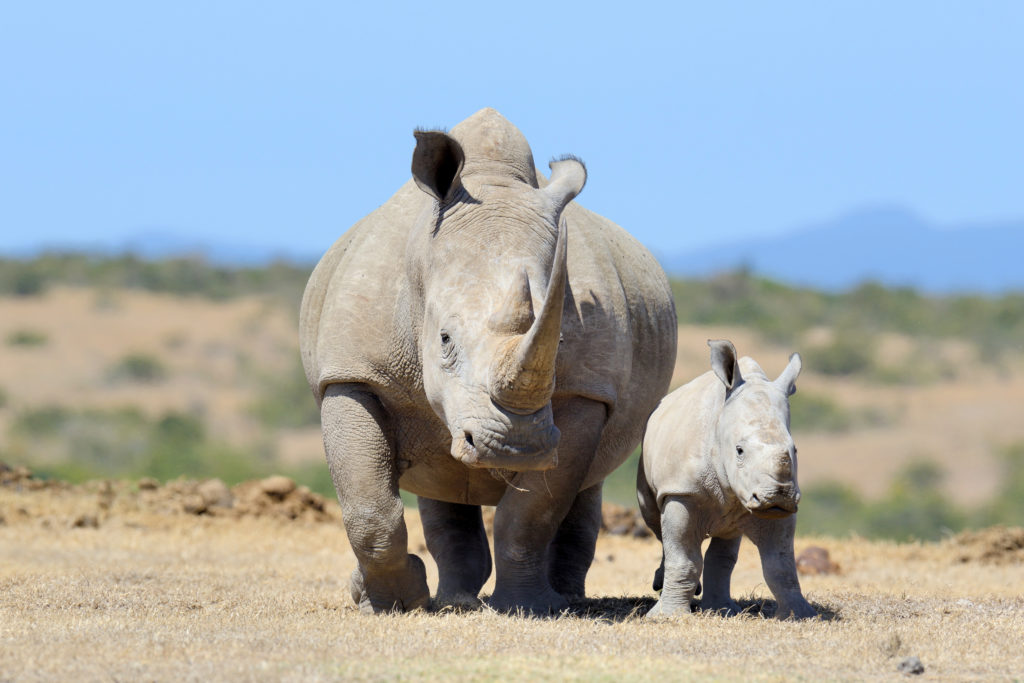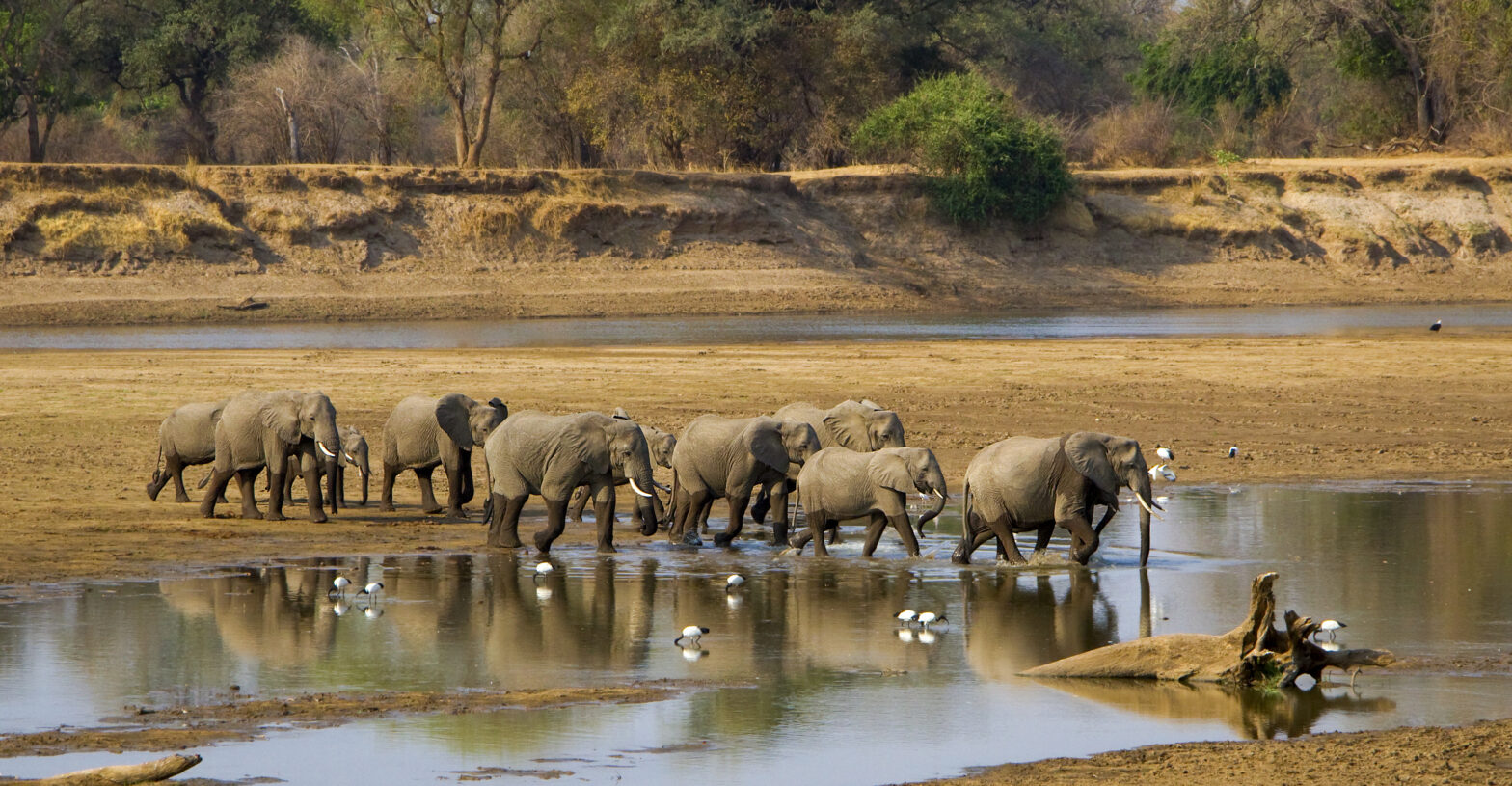Thousands of rhinos and elephants are killed each year for their ivory horns and tusks, which are sold predominantly to Asia for use as traditional treatments for illness.
Poaching is an unforgiving ‘profession’, but they are winning the battle for Africa’s natural heritage.
Significant efforts have been made to combat the effects of poaching both globally and from individual governments within the African continent.
This year, in fact, Kenyan President Uhuru Kenyatta set fire to a huge 100 tonne stockpile of ivory in an effort to show his country’s commitment to saving Africa’s elephants.
The battle rages on, but with conservation and anti-poaching groups greatly outgunned and outmanned the future does not look bright. However, technology could have an impact on this crisis and swing the pendulum back in favour of Africa and its endangered animals.
In an article by Thomas Snitch, first published in The Conservation, professor in Advanced Computer Studies, University of Maryland, he discusses a number of ways different technologies are taking the fight to poachers by hindering their illicit activities.
>See also: Drone technologies establish evolved GIS
Snitch, in his article, said: ‘We devise analytical models of how animals, poachers and rangers simultaneously move through space and time by combining high resolution satellite imagery with loads of big data – everything from moon phases, to weather, to previous poaching locations, to info from rhinos’ satellite ankle trackers – and then applying our own algorithms.’
‘We can predict where the key players are likely to be, so we can get smart about where to deploy rangers to best protect animals and thwart poachers.’
His efforts are admirable and necessary, and it is encouraging to see technology’s potential in a social endeavour.
Data and drones
Drones have been flying in Africa’s war on poaching since 2013, and they have the potential to greatly reduce the threat from poachers.
Snitch provides an example of how drones (or UAV’s) can act as a prevention, detection and response solution.
The UAVs can see poachers from a distance of at least 2 kilometres from the rhinos, according to Snitch.
‘On our first UAV flight in South Africa, the UAV flew to our pre-determined spot and immediately found a female rhino and her calf; they were within 30 meters of a major road. We decided to circle the drone over the rhinos and within minutes a vehicle stopped at the park’s fence. Three individuals exited the car and began to climb the fence to kill the rhinos. Our rangers had been pre-deployed to the area; they arrested the three poachers in under 3 minutes. This episode has been repeated dozens of times over the past 20 months.’

However, drone-use is only effective in ‘areas where rangers on the ground are at the ready to use our data’, said Snitch.
Randomly sending out drones to monitor the vast landscape is not an effective measure. Africa is too big.
>See also: Will drones be an opportunity or a threat to industry?
This is where the data analytic models come into play, suggests Snitch. ‘Based on our models, we know, with near 90% certainty, where rhinos are likely to be on a particular night between 6:30 and 8:00, prime time for killings. At the same time, by mathematically recreating the environment when previous poaching have occurred, we have a very good idea of when and where poachers are likely to strike.’
The predictive models are ‘heuristic’ so that they are capable of learning and improving their methods. They can recognise a change in poaching patterns, for example.
Based on this it is evident that utilising technology can enable Africa’s anti-poaching organisations to dramatically reduce the poaching success rate. They don’t have to find the poachers, they just have to know where the animals at risk will be.
Tech that works together is stronger
Taking the example of drones and analytics from above, it is clear one would be ineffective without the other. But it is more extensive than that.
Producing a solution to the poaching crisis requires a combination of satellite, analytics, maths and drone (UAV) technology. The other notable requirement is rangers. People on the ground who can use the technology available to intercept the poachers before they have a chance to carry out their kills.
Analytics can be used to position the anti-poaching personnel in strategic locations, moving rangers ‘as if they were chess pieces’.
A success?
In a word? Yes. According to Snitch in every area where they implemented the technological solutions, within 5-7 days poaching stops. The technology enabling the rangers wins.
‘Over the past 90 days, there has not been one single poaching incident. Four months ago, this region was losing several rhinos a week.’
>See also: Bridging the business intelligence and analytics gaps
For this solution to have a widespread impact it must be adopted by all nations suffering from poaching – at least on a testing basis.
There will always be a supply for Africa’s animals, until a generational shift in beliefs and attitudes takes place, especially in Asia. To counteract the constant threat it is vital these technologies continue to help aid the worthwhile anti-poaching cause.
‘Our solution to the poaching problem lies in the combination of satellite monitoring, great math, properly positioned rangers and UAVS flying precise flight paths. It works.’







